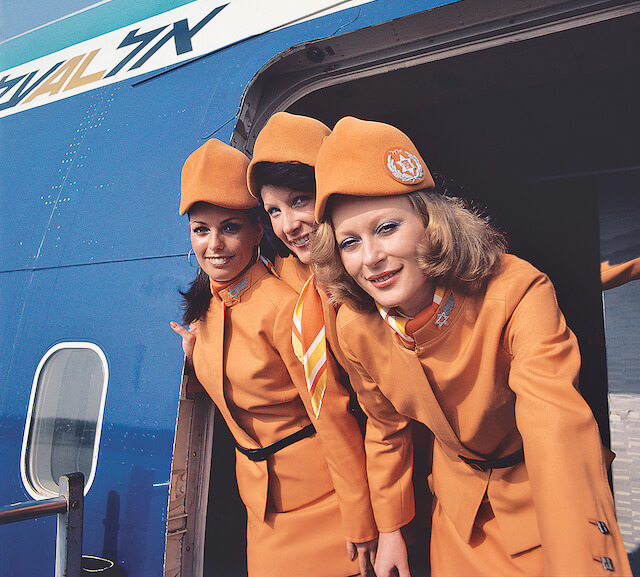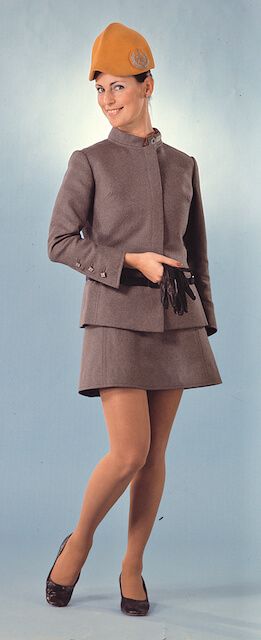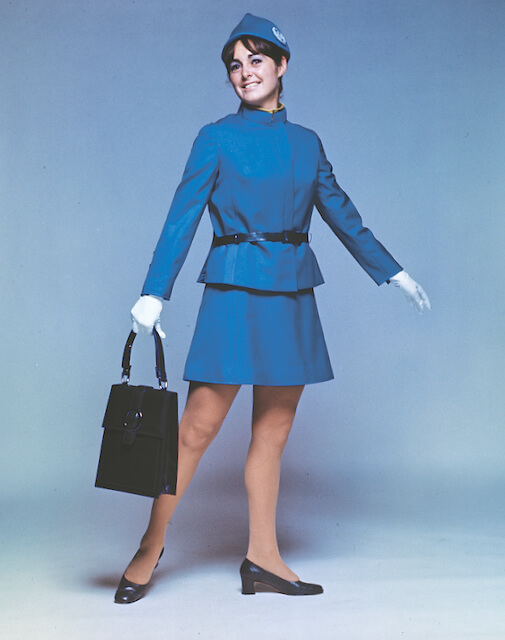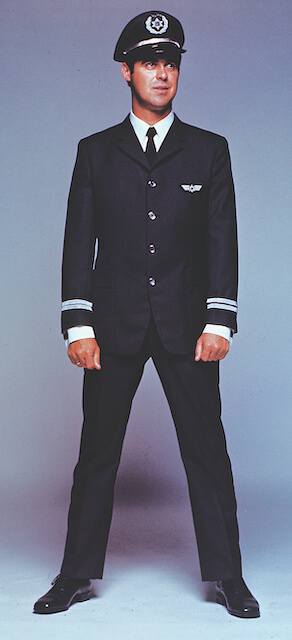Come to the ark, you and all your household… (Genesis 7:1)
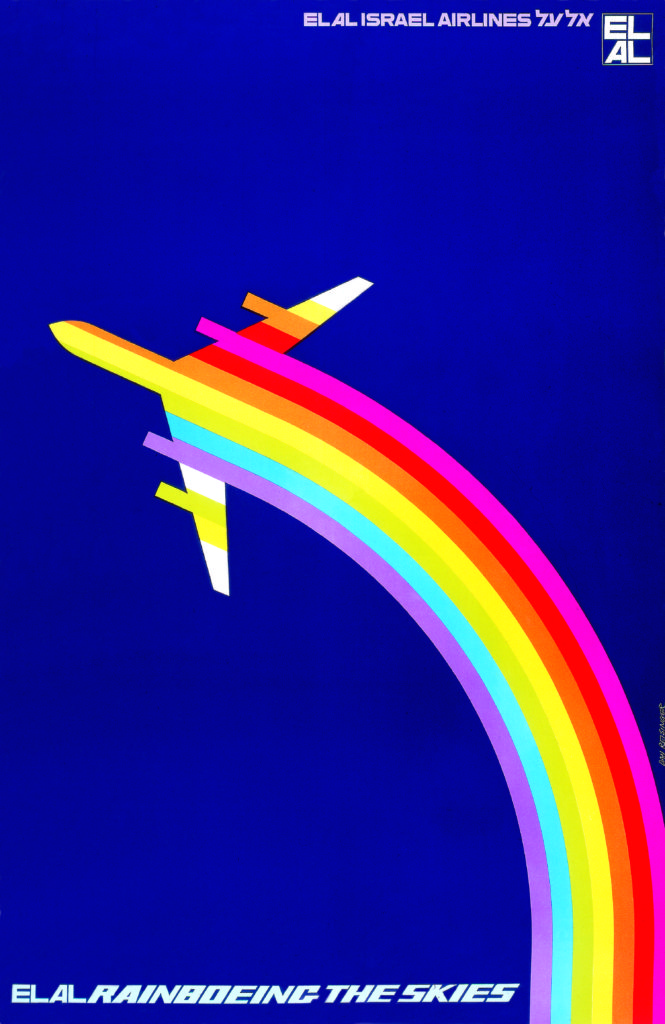
Design of the Boeing 747, first of the wide-body (twin-aisle) jetliners, began in the early 1960s. Market research showed that passenger and cargo traffic would likely continue their growth rate, and airlines would need much larger capacity aircraft. Production of the 747, inevitably nicknamed ‘jumbo jet’ by the popular press, started in early 1967 at a huge new Boeing assembly plant in Everett, Washington.
EL AL watched the development of the 747 closely, as it hoped the 350/400-seat airliner would be ideal for the prime Tel Aviv–New York route. The very first 747s, the -100 series, were passed up, in part because the early engines could not meet the desired range and load capabilities. Instead, EL AL opted for the -200B series with 20,250kg (45, 000lb) thrust Pratt & Whitney JT9D-7 engines, more powerful (and reliable) than the original JT9D-3 powerplants, permitting increased operating weights. These 747s had the capability to fly nonstop eastbound from New York to Tel Aviv, a distance of 9,270km (5,760mi), with a full payload.
Lod Airport’s existing runways proved adequate for the 747s, as the giant aircraft’s wing-flap system and 16-wheel, four-main truck landing gear allowed it to operate from runways normally used by much smaller 707s.
The 747 represented the largest investment Israel had ever made for a single piece of equipment. The price tag of $31-35 million each including training and spare parts (equivalent to $193-218 million today) was staggering for the small economy of the state. Yet EL AL was able to finance the acquisitions entirely out of revenue, with the assistance of long-term, low-interest loans from the Export-Import Bank of the United States.
But the cost of the aircraft themselves was only the beginning. The 747 was nearly twice as big as any previous airliner, with a length of over 70m (231ft), a wing span of 59m (195ft), and a tail height of 19m (63ft)—equal to a six-story building. Gross weight of the -200B was an enormous 348,750kg (over 387 tons). The maximum passenger capacity of over 400 was a 60% jump. New ancillary equipment and maintenance and training infrastructure was necessary to service and operate the 747, and a new hangar was built with a roof area covering one hectare (2½ acres), the largest structure of its kind in the Middle East at the time. A new cargo building also had to be built. In all the initial investment in aircraft and facilities exceeded $200 million (1.25 billion today).
Almost every work group in the company had to be re-educated. Pilots had to be trained and certified for the 747, and most of the mechanics and technicians had to be indoctrinated in new technology. They took advantage of knowledge gained since the introduction of the first 747 in scheduled service by Pan American in January 1970.
A New Look
With the anticipated arrival of the 747, EL AL introduced a striking new paint scheme designed by Israeli artist Dan Reisinger—one that proved so popular it continued as its primary livery for nearly 30 years. Against a white background, a dark blue stripe started at the front wing area and continued to the rear, while a light blue stripe started at the head and swept upward onto the tail, capped by the Israeli flag with the inset six-pointed Star of David.
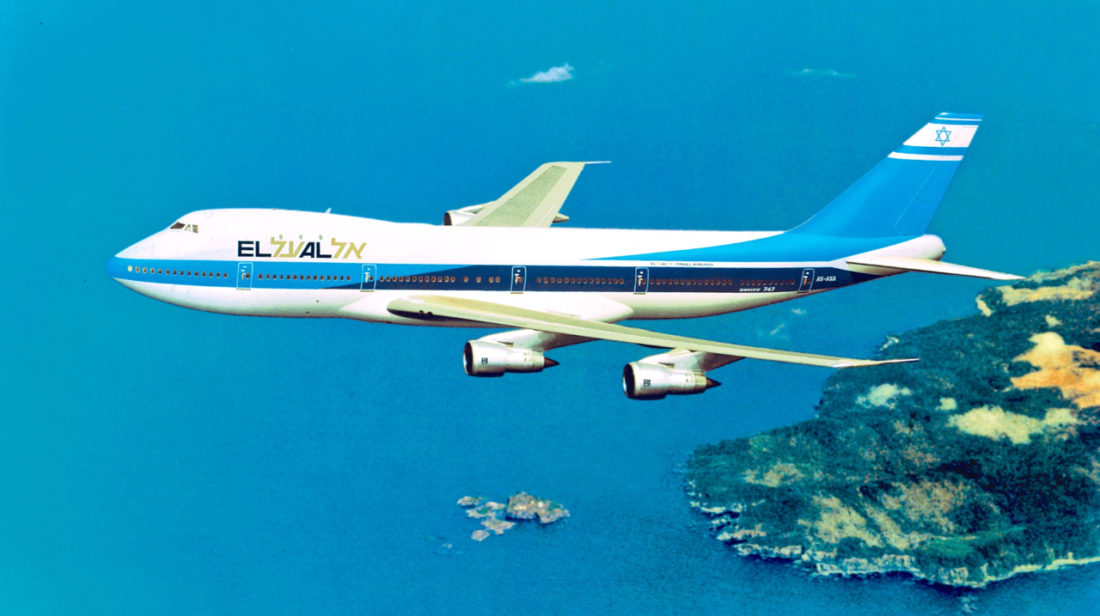
Inside the 747, a new interior design featured themes of cheerfulness and light. Noted Israeli artist Dan Reisinger and the airline’s design team aimed for a bright atmosphere with extensive use of color. The scheme was based on the image of the sun—orange, pink, red, silver and white—in keeping with EL AL’s wish to welcome passengers to the warm Mediterranean sun colors of Israel. Seats, ceilings and walls were decorated in several different hues, staggered throughout the aircraft.
To provide a feeling of intimacy and personalized service, the main cabin of the 747 was divided into five self-contained sections. Each sector had its own service areas and food galleys, appropriately divided into meat and dairy areas to comply with kosher dietary laws. The 747’s upper deck, immediately behind the cockpit and originally conceived by Boeing as a lounge area, was used for first class seating.
With the advent of the 747, EL AL initiated in-flight entertainment, showing a wide range of the latest films. Passengers could also select from numerous audio programs, including not only the usual range of music, but Israeli and Jewish songs, Bible readings, and comedy as well.
747s Join the Fleet

On 26 May 1971 EL AL took delivery of its first 747-200B (4X-AXA). The ‘jumbo ark’, commanded by Gad Katz, with Reuven Narunsky and Danny Rosin, arrived over the shoreline of Tel Aviv and landed at Lod Airport on 2 June.
In one of EL AL’s proudest moments, the next day Prime Minister Golda Meir, Transport Minister Shimon Peres, and EL AL Chairman Moshe Carmel and President Mordechai Ben-Ari, greeted a large gathering of dignitaries and employees in a welcoming ceremony at Lod Airport for the 747.
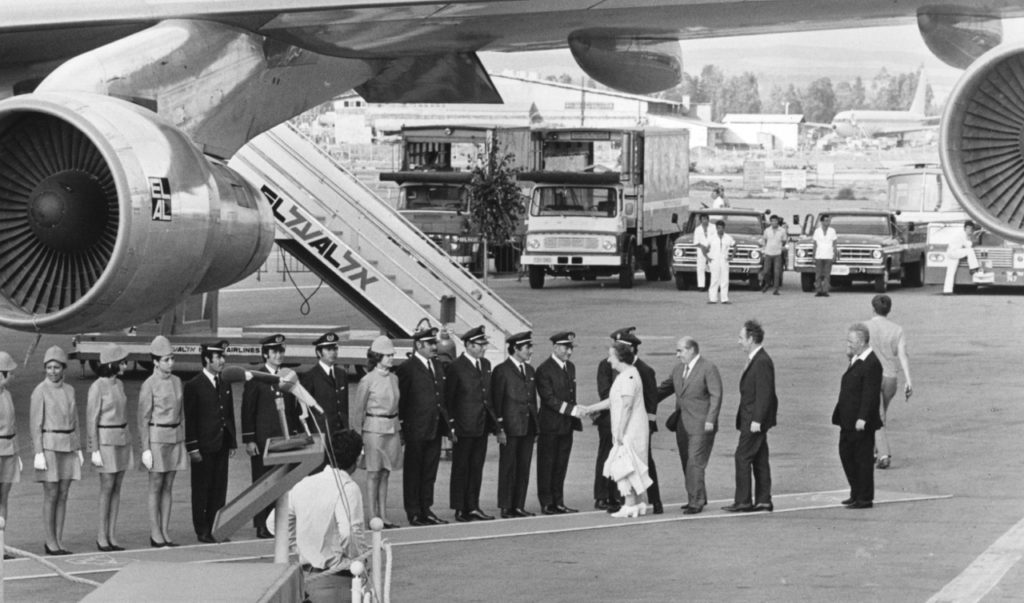
Scheduled service with the 747 began on 8 June 1971, between Tel Aviv and New York, with a stopover in London in each direction. The second 747 (4X-AXB) was delivered on 22 November and promptly entered trans-Atlantic service, with a stopover each way in Paris.
With the introduction of these two wide-body jets, EL AL increased its total seat capacity by over 50%, and completed its aircraft acquisition and development program initiated in 1968. In the four-year period, EL AL had acquired three additional 707s (including two -320C models that could be used for mixed passenger-cargo or all-cargo operations), and the fleet now consisted of eight 707s, two 720Bs and two 747-200Bs.
Operationally, procedures for the 747 were developed to maintain the airline’s exceptional turnaround times, even though the ‘jumbo’ carried nearly triple the passengers of a 707. For example, at New York’s JFK Airport, during a typical three-hour stopover, EL AL would deplane 400 people, remove about 1,000 pieces of luggage and several tons of freight, clean and replace 400 blankets, pillows and headrests, vacuum carpet covering the equivalent of 13 large living rooms, clean 14 lavatories, load eight galleys with 800 meals, refill tanks with over 190,000 liters (50,000gal) of fuel, load about the same amount of baggage and cargo that had just been offloaded, and enplane 400 new passengers.
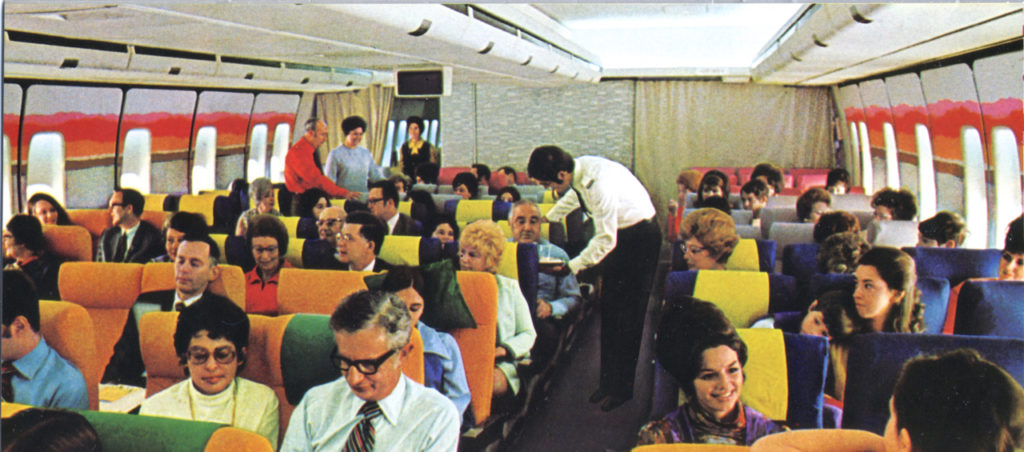
Many observers had doubted EL AL’s capacity to achieve such an ambitious program of aircraft acquisition in so short a time. They claimed the airline had overextended itself, especially in view of the technical demands, the tense situation in Israel and on its borders, and terrorist attacks on commercial aviation in general and EL AL in particular. Yet, under the leadership of Mordechai Ben-Ari, EL AL attained unprecedented success.
EL AL’s traffic soared. The 1971-72 fiscal year recorded nearly 700,000 passengers, a 40% increase over the previous year. Load factors also stayed at or near the highest among North Atlantic carriers. In the first year of 747 operations, trans-Atlantic load factors reached 89.6% during peak travel periods, with an annual average of 79.4%, well above the industry average of 51% at the time. Of 106 IATA carriers, EL AL, with only 12 aircraft, was number 16 in terms of production (total revenue passenger kilometers flown divided by the number of employees). EL AL became an airline to emulate. Major airlines sent representatives to check out EL AL’s superior security precautions, and EL AL’s commercial policies were carefully studied by air carriers of developing countries.
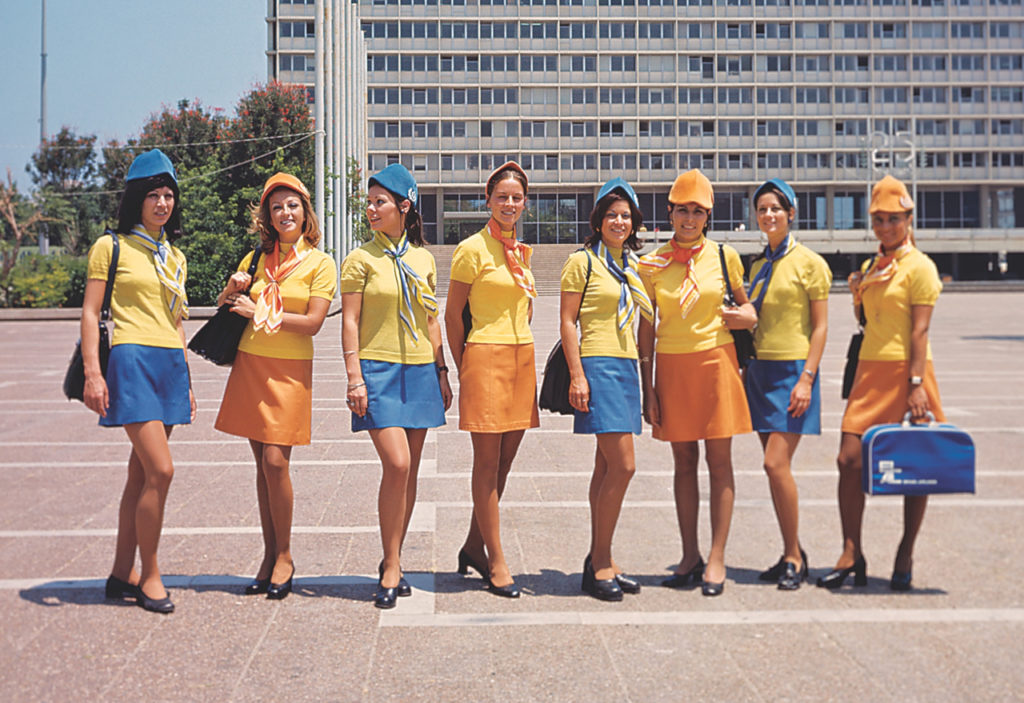
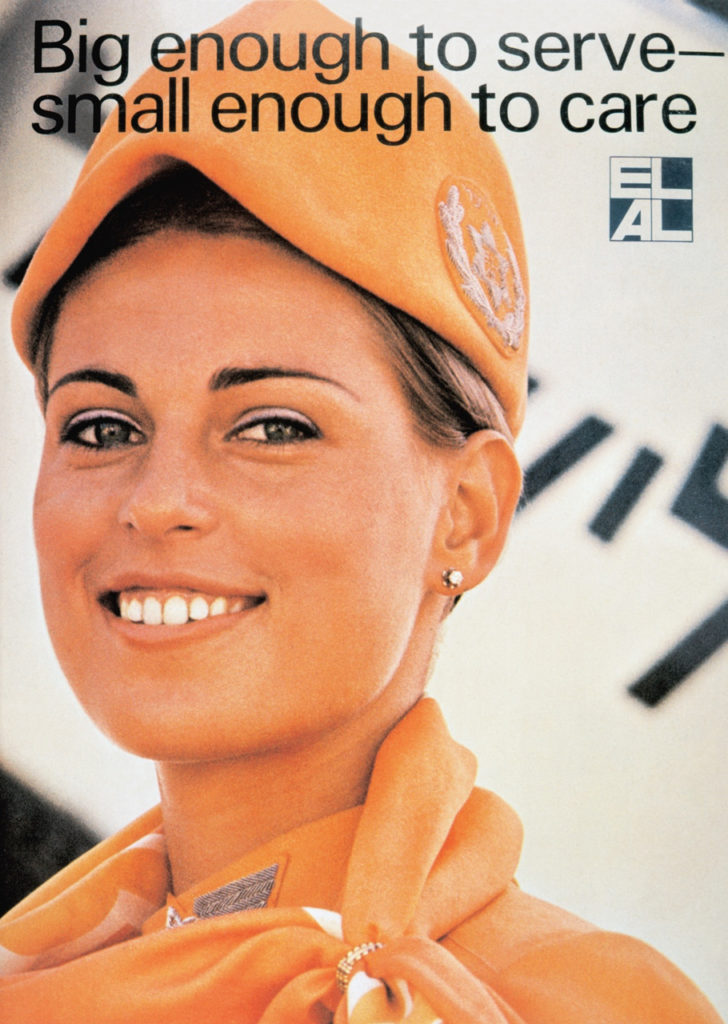
While EL AL had been operating nonstop eastbound from New York to Tel Aviv for many years, it had not flown scheduled nonstop flights in the opposite direction. With the introduction of the third 747, on 29 April 1973 nonstop westbound flights from Tel Aviv to New York began. As westbound travel entailed flying against the prevailing winds, it amounted to a 12-hour flight—then the longest in the world. At first, with the most powerful 747 engine available at the time, the Pratt & Whitney JT9D-7AW, only 360 of the 400 seats could be occupied and no cargo carried, on westbound nonstops. Greater passenger and cargo loads on the westbound nonstop Tel Aviv-New York route had to await the availability of the more powerful Dash 7F engine in 1975.
More Expansion
Meanwhile, EL AL expanded its network on 28 March 1971 by opening a second North American gateway, at Montréal, Canada (served via Amsterdam); by April 1972 frequency had reached four flights a week. Another new route started in March 1971 to Marseille, France, which soon thereafter supplanted the existing service to Nice.
EL AL also moved into related tourism areas. Having formed Teshet, a wholly owned subsidiary, in 1968 to enter the airline catering business, the airline used Teshet to acquire a 24% interest in the Nairobi Hilton and to provide management and marketing for the Laromme Hotel in Jerusalem and the Laromme Hotel (later known as the Carlton) in Tel Aviv.
The success of the first two 747s led the government to approve the purchase of a third. This aircraft (4X-AXC), an improved Dash 200B with increased gross operating weights, was delivered on 18 April 1973. The addition increased EL AL’s fleet to 13: three 747s and ten 707/720s.
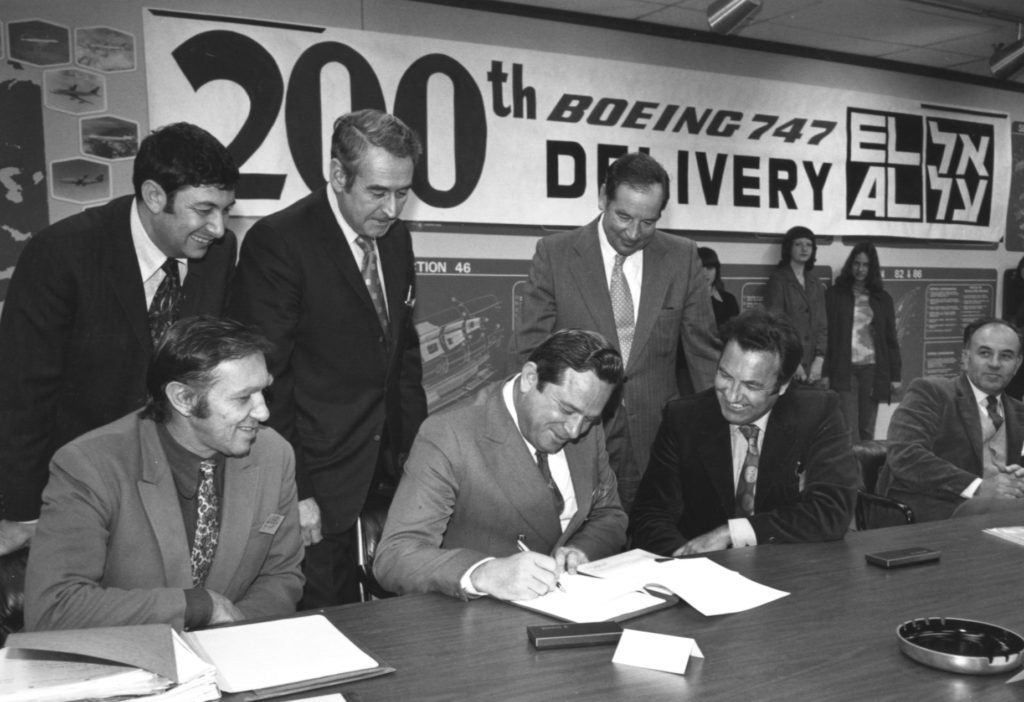
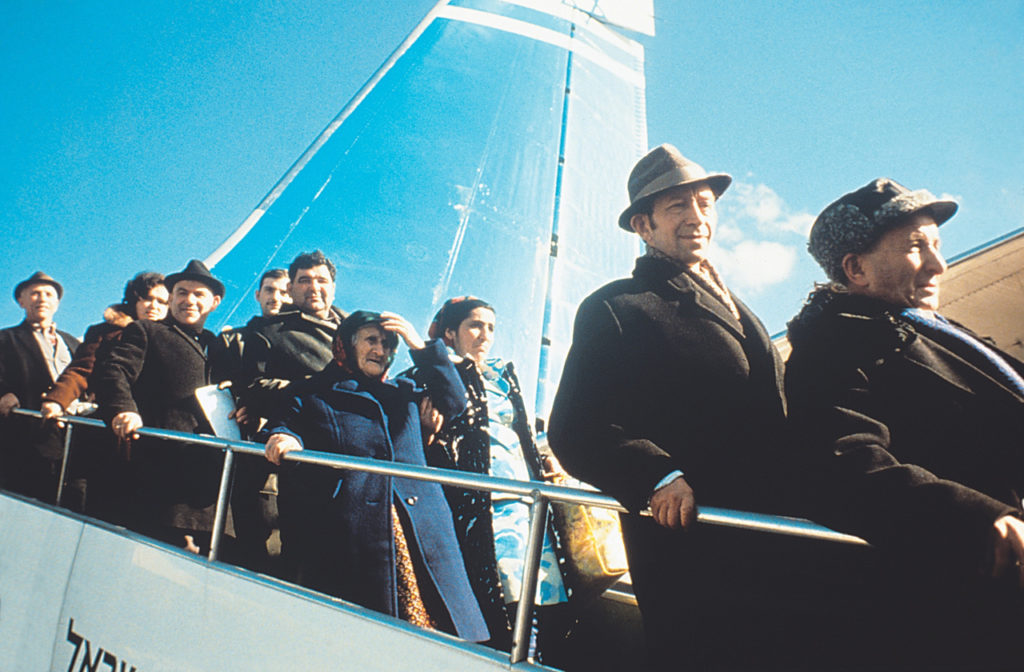


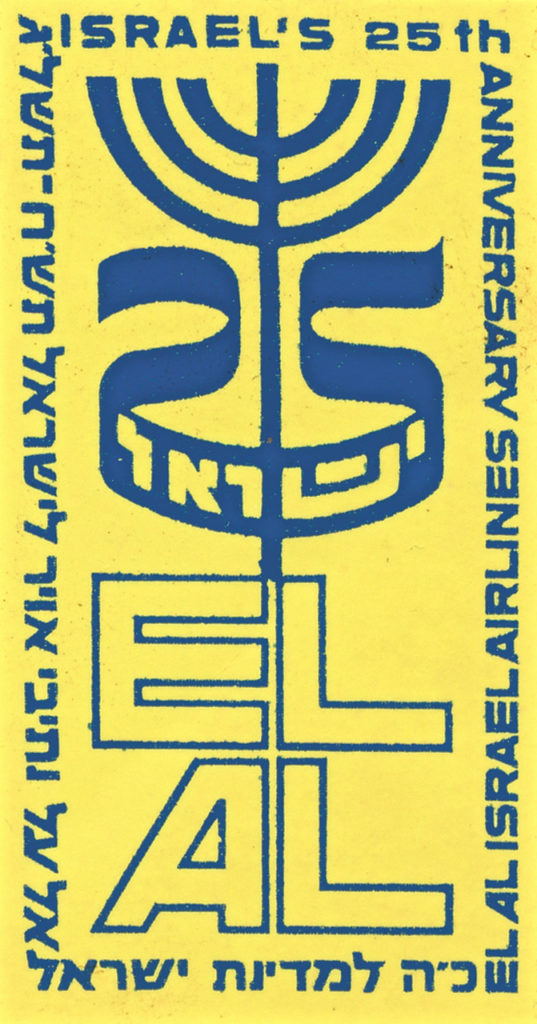
The year 1973 was the 25th anniversary of the State of Israel, further tourist expansion was hoped for, and the emblem of the notable event was painted on EL AL’s aircraft in celebration. Paralleling the optimism, EL AL entered negotiations to obtain additional US gateways. Extension of routes to the east, as well as service to Buenos Aires, Argentina, were being considered. All these plans, however, ended suddenly when Israel was thrust into another war of survival.
The Yom Kippur War
On 6 October 1973 the combined forces of Egypt and Syria attacked Israel in the early afternoon of the Jewish fast of Yom Kippur (Day of Atonement), the holiest day of the Jewish year. Egyptian fighters struck at Israeli air bases in the Sinai, while heavy guns and mortars pummeled the Israeli defense positions on the Suez Canal; Syrian armor and artillery advanced against the Golan Heights. It was war again—only this time the Israelis were taken by surprise. Without warning or the chance for an advance airlift of supplies, EL AL was once more thrust into the forefront.
With only minimum manpower and under maximum stress, tourists and foreign diplomats had to be evacuated, while emergency equipment and supplies had to be airlifted in and Israeli nationals flown back from abroad. Upon the outbreak of the fierce battles, all foreign carriers stopped flying to Israel, and Lod Airport was closed to all unnecessary civilian traffic. Meanwhile several thousand outbound passengers filled the terminal. Helicopters landed with wounded from the front lines who were then rushed to hospitals. Not all those wishing to leave could be accommodated the first day and many had to return to Tel Aviv hotels until the following day when some normalization returned to departures.
In an immediate response directed by EL AL’s head of Operations, Benjamin Davidai, EL AL rapidly began ferrying Israeli nationals home from overseas and airlifting emergency supplies, medicines and vital materials. EL AL again became the only air link between Israel and the outside world.
During the second day of the war, the interiors of the 707s were gutted and an emergency ‘skytrain’ operation began. Pilots almost lived in their aircraft, which were unloaded and reloaded as rapidly as possible. Boeing personnel in Seattle made new weight and balance calculations to raise the 707’s payload to the limit, finally blessing an increase in maximum cargo weight from 42,300 to 57,150kg (94,000 to 127,000lb). Pilots logged 180 hours of flying time in two weeks, an average of over 12 hours per day. Friendship and support greeted the EL AL crews wherever they landed.
On the ground, most of the regular young cargo handlers were fighting on the front. Other staff had to do the heavy lifting, despite their age and physical condition, and worked double shifts and slept in offices when time permitted.
While EL AL’s skytrain operation continued, a US Air Force supply shuttle by the Military Airlift Command started on 14 October. Giant Lockheed C-5A Galaxy transports, supported by C-141 StarLifter and C-130 Hercules freighters, arrived in larger numbers at Lod Airport, disgorging additional desperately needed equipment and materiel.
Despite the call-up of all personnel under age 40, and with only a quarter of the normal staff on duty to keep the aircraft flying, EL AL managed to maintain regular air links and communications with the world. Even with a greatly reduced number of available seats, over 22,000 passengers were carried in that hectic period.
Nearly three weeks of battle passed before a shaky cease fire was initiated. Israel had won the war, but paid a high price for victory. More than 2,500 Israelis were killed and over 3,000 wounded in action, a painful number for a small nation. Sixteen of those killed, including nine pilots, were EL AL employees.
War’s Aftermath
Israel’s tourist industry was severely damaged by the conflict. The number of visitors plunged, and EL AL and Arkia (its domestic subsidiary at the time) immediately experienced a sharp drop in traffic. Meanwhile, EL AL’s aircraft had to be completely refurbished, because the interiors had been all but destroyed in the airlift. Personnel levels returned to normal only slowly, as those in the armed services were not immediately released from duty. Ethiopia, bowing quickly to Arab pressure, denied landing rights in Addis Ababa and, within a month after the war, all of EL AL’s operations there were shut down.
In December 1973 the pioneer Israeli leader David Ben-Gurion died at age 87, and the realization that his passing marked the end of an era further dampened the nation’s mood. Soon thereafter, the Israeli Government changed the name of Lod Airport to Ben-Gurion Airport in his memory.
Israel began to feel the severe economic aftershocks of the war by early the following year. The financial costs of the war had been tremendous, and now the Arab States were discovering their oil weapon and starting to use it. Fuel prices rose to unprecedented heights, afflicting Israel and EL AL alike.
By mid-1974 flight operations had returned to normal. However, the psychological effects of the war and the strained economy and new mood in Israel took their toll on EL AL’s employees. Discontent and inefficiency grew. Wildcat work stoppages frequently disrupted flights. Not until February 1975 was a new work contract and pay agreement signed which brought a fragile labor truce with the workforce.
In July 1974 the Cypriot-Turkish conflict erupted, and foreign airlines canceled flights to Israel and other Middle East destinations. For the second time in nine months, EL AL became the only air link between Israel and the western world. Israelis again appreciated the vital importance of their national carrier, as EL AL added more flights and worked overtime to accommodate stranded and interline passengers from other airlines.
Air Cargo Expands
EL AL’s three new Boeing 747s could each handle 13,500kg (15 tons) of freight besides their passengers. By supplementing the two 707-320C convertible cargo aircraft, the 747s greatly expanded EL AL’s air freight. New cargo facilities were built at Ben-Gurion Airport and at Heathrow Airport, London. As a result, in fiscal year 1971/72, cargo operations increased to over 22 million kg (25,000 tons).
The sharply increasing demand for cargo led to the acquisition of EL AL’s first 747-200C convertible passenger/cargo ‘Combi’ (4X-AXD) in December 1975. This was followed in June 1977 by its first pure-cargo 747-100F (4X-AXZ), an aircraft that had previously served with Continental Airlines and the Imperial Iranian Air Force then refurbished by Boeing before delivery to EL AL.
EL AL purchased three additional new 747s from Boeing before calling a halt to its aircraft acquisition program for the decade: a second 747-200C Combi (4X-AXF) received in June 1978, an all-cargo 747-200F (4X-AXG) delivered in March 1979, and a fourth all-passenger 747-200B (4X-AXH) added in December 1979 and later converted to cargo.
The two Combi 747s and 747-200F featured a freight capacity of 113,400kg (125 tons), with the nose of each aircraft swiveling upward for commodious front-loading. As the 747-100F was a conversion from a passenger aircraft, it carried a maximum of 89,100kg (99 tons) and did not have a nose entrance; instead, loading was completed through a side cargo door installed in the left side of the rear fuselage (in contrast, -200F aircraft have the option of both the open nose and side cargo door features). EL AL’s 747 fleet now totaled eight, with its overall aircraft number rising to a new high of 18. Besides the added capacity, EL AL benefited greatly from the convertible features of its passenger/cargo aircraft which allowed it to constantly select the best mix of passenger and cargo to meet its needs at any given time.
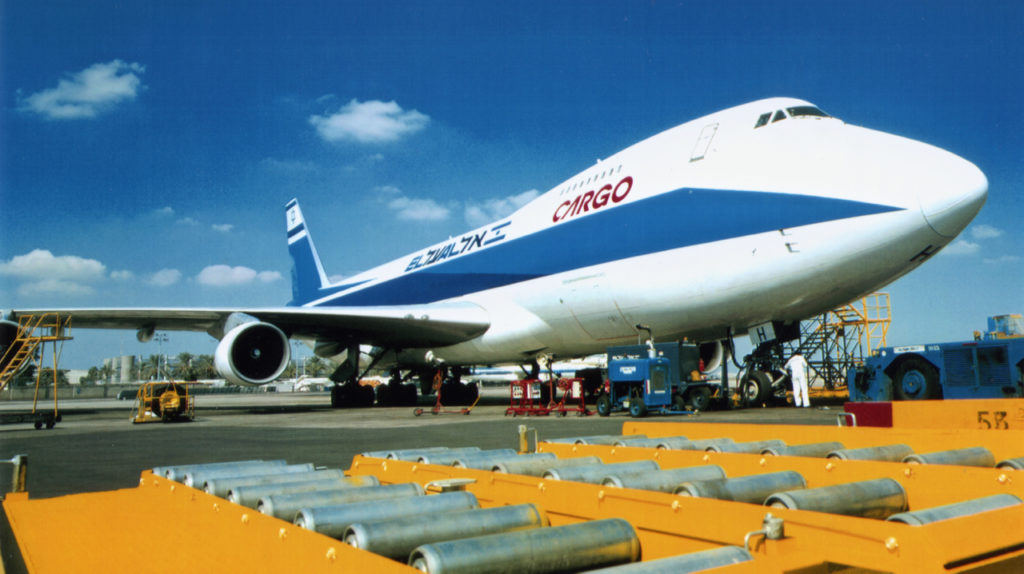
A profitable Israeli export cargo market, and the desire of the Agricultural Board in Israel (Agrexco) to share in it, led to the formation in 1976 of the Israeli all-freight carrier, Cargo Air Lines (CAL). Although CAL has never been owned by EL AL, its original operating authority from the Israeli government obligated it to use 747 freighters leased from EL AL when available. This arrangement lasted until 1999 when the government authorized CAL to own and operate its own aircraft.
Labor Unrest Surges Again
The fragile labor truce based on the February 1975 new contract ended abruptly seven months later. At issue was the government’s imposition of income tax on overtime work. The EL AL workshops responded by refusing to work extra hours, raising havoc with the airline’s key morning departure schedule. Eventually the workers gave in to the new taxes, but when the benefits of certain management groups were increased shortly thereafter, the unions staged a crippling 19-day strike. By the time the labor dispute ended on 3 November 1975, 300 flights and 30,000 passengers had been affected. Work stoppages continued to plague the airline sporadically in the years ahead, severely damaging EL AL’s reputation.
Another devastating wildcat strike occurred in 1978. The work committees, backed by the employees at large, pressured management to complete negotiations on a new labor contract by 1 April 1978. They chose the busiest and most profitable season, the Passover/Easter period, as their deadline. Without a contract by the deadline, the workers struck for 21 paralyzing days. Eventually an agreement was signed, but everyone lost, as many passengers and travel agents refused to book flights on EL AL due to continued concern over possible labor disruptions, and it took months to coax traffic back to normal.
Engine Upgrades, and Improved Technology
An upgrade program to more powerful Dash 7F engines for EL AL’s 747s started in 1975, phasing in the new powerplants over a three-year period. With these engines, the 747s had the capability to carry a full passenger and cargo load on EL AL’s longest nonstop westbound route, from Tel Aviv to New York, significantly boosting the fleet’s productivity. At first, EL AL continued to operate all its scheduled 747 nonstops from Tel Aviv to New York with departures during daylight. In computing maximum takeoff weights, which must retain a necessary margin of safety, the temperature at takeoff time is a significant factor. Warmer temperatures require more force for takeoff, and even with the improved Dash 7F engines EL AL found that on warmer days it often had to reduce passenger or cargo load to fly nonstop westbound to New York, or it had to make a stop enroute.
EL AL’s First Vice President, Benjamin Davidai, continuously urged the airline to change the departure time for its westbound nonstops to New York to the hours between midnight and 1AM, because the cooler temperatures would allow full loads to be consistently carried, but other managers believed that passengers would not want to travel in the middle of the night. Finally, in 1979 EL AL tried out departure times after midnight (usually 0100) for many of its westbound nonstop 747 services from Tel Aviv to New York. Passengers actually came to prefer these flights, designated ‘LY001’, because they could get a full night’s sleep during the 12-hour trip, which would arrive at JFK Airport about 0600 local time, and all the flights from Tel Aviv to North America departing around midnight to 1AM remain highly popular to this day. Meanwhile, daytime flights continued, and with further improvements in 747 engines with the Dash 7J model, eventually full loads could consistently be carried also on westbound nonstop Tel Aviv-New York flights leaving in the daytime..
Meanwhile, on the ground, in January 1976 EL AL placed into operation its first computerized reservations system, called ‘Carmel’. EL AL also started to perform 747 maintenance work at its Ben-Gurion Airport base in order to reduce costs and upgrade its long-term maintenance capabilities.
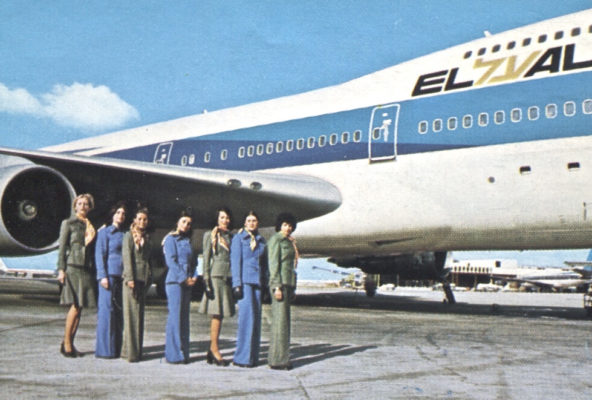
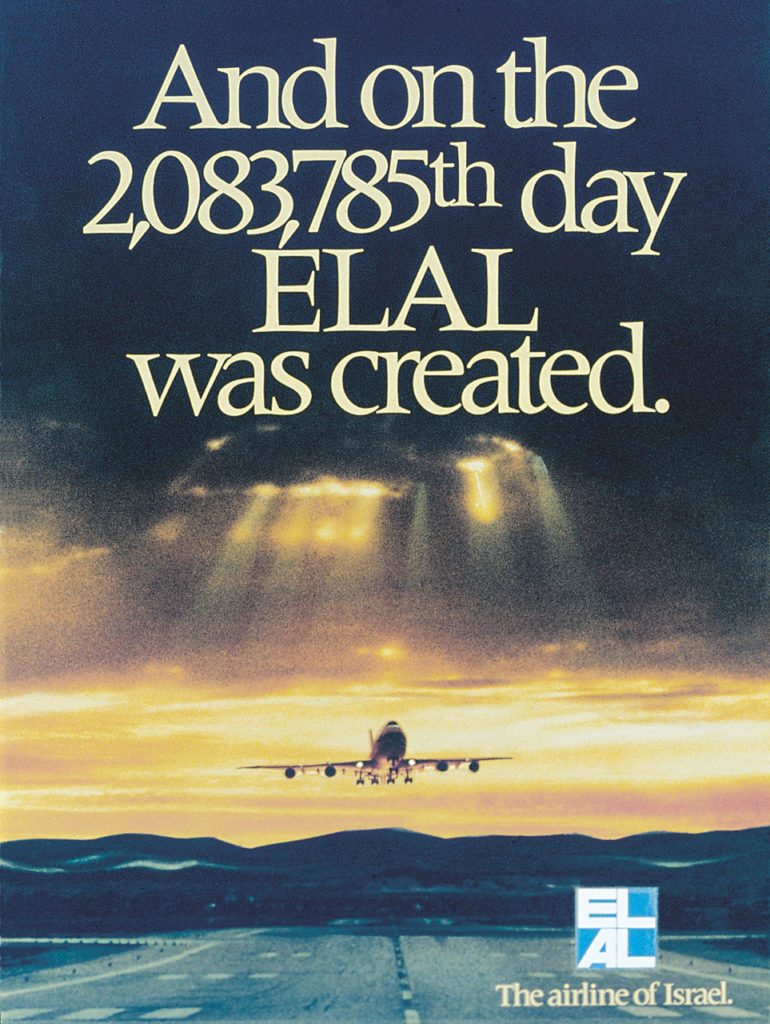
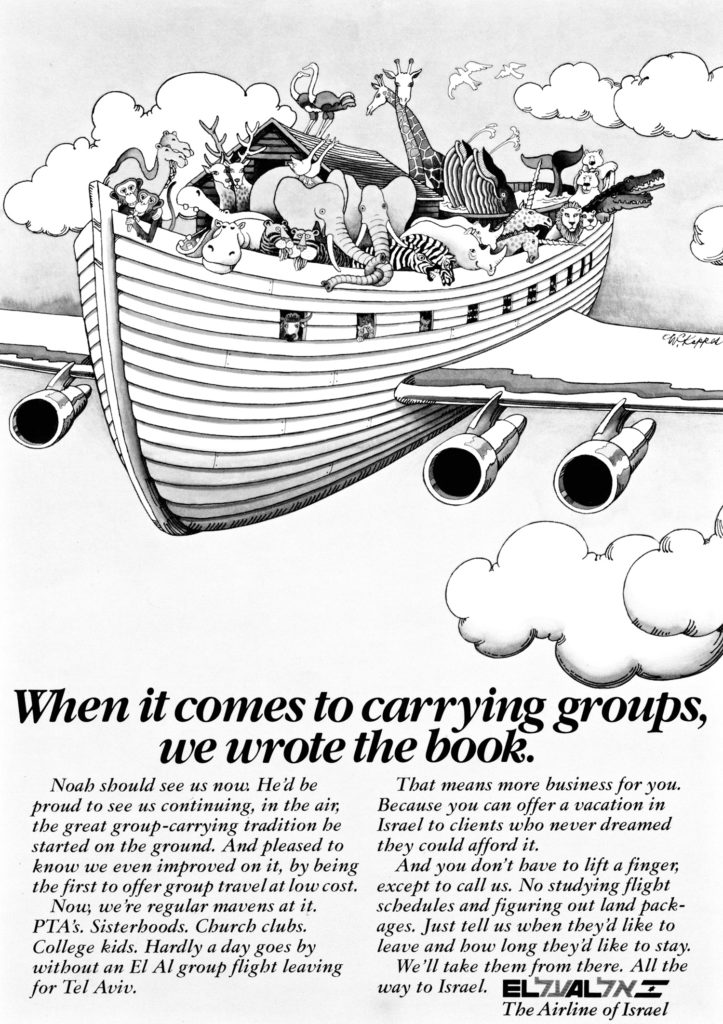
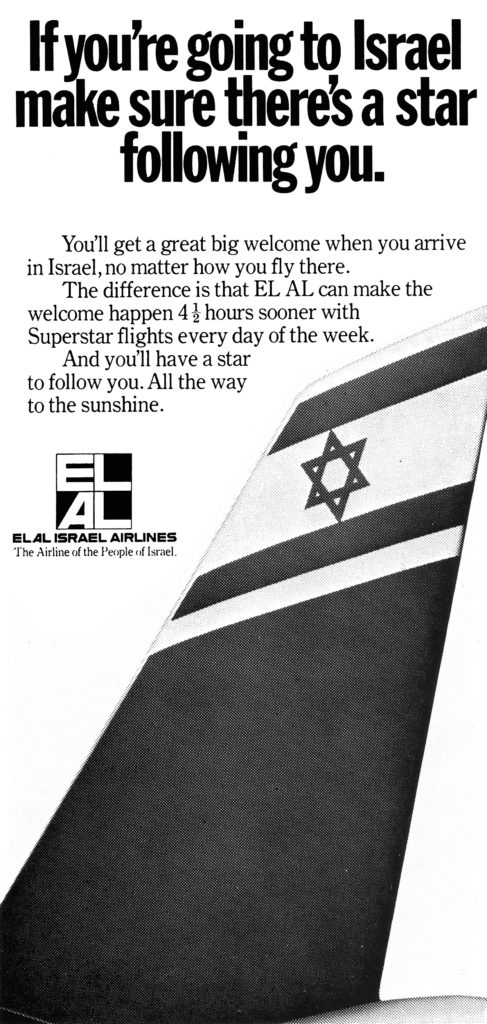
New Destinations
For a brief period during 1975-76, EL AL operated flights from Frankfurt to Atarot Airport in Jerusalem. However, Germany, like other European countries, did not allow EL AL to fly nonstop to Jerusalem because Atarot is located in what was East Jerusalem, Jordan, before the 1967 Six Day War. The EL AL aircraft therefore landed first in Tel Aviv and, after a change of flight number and crew, took off immediately for a seven-minute flight to Atarot. This was one of the shortest flights in the world by a major airline. The service was eventually dropped for commercial reasons.
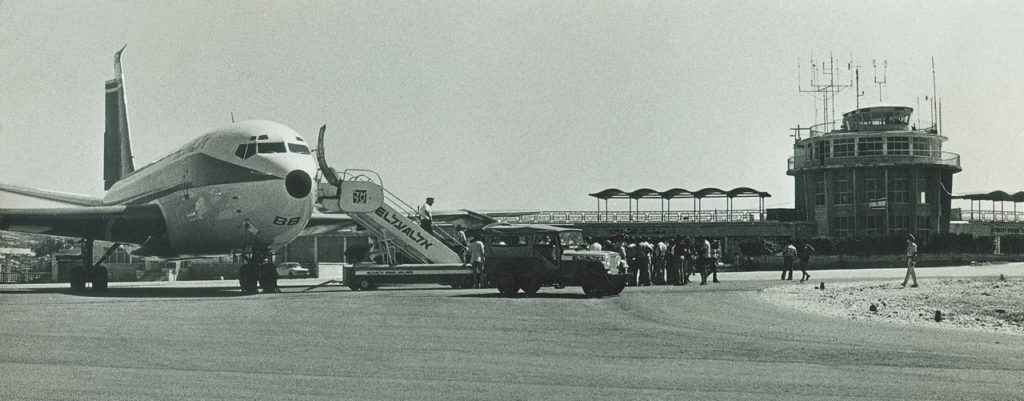
On 9 November 1976 a new route to Mexico City was opened with Boeing 707s via stops in Amsterdam and Montreal. This became EL AL’s longest route: 13,050km (7,830mi). In 1979 the Mexico City service was re-routed via Rome and New York, but the destination failed to achieve profitability, and in October the same year the city was dropped from the network. Service to Lisbon was launched in September 1977 and continued for several years.
Through a Protocol signed 16 August 1978 by Israel and the US to their original 1950 Air Transport Agreement, EL AL won landing rights to four additional US cities. On 1 April 1979 EL AL inaugurated service to Miami and Chicago, as extensions of some of its existing New York flights.
The most dramatic new destination of all, however, proved to be Cairo. Following Egyptian President Anwar Sadat’s historic visit to Jerusalem in November 1977, Israel’s Prime Minister Menachem Begin prepared to reciprocate, and an advance Israeli governmental delegation was dispatched to Egypt in December. An EL AL 707 (4X-ATY) was polished up and the word Shalom painted on the aircraft’s nose in Hebrew and Arabic. Special flag holders were mounted by the windows of the cockpit to allow the plane to taxi to the Cairo terminal with the flags of Israel and Egypt fluttering in the breeze. Eventually, the talks between Begin and Sadat yielded an Israeli-Egyptian peace treaty, and on 3 March 1980 EL AL started regular scheduled service to Cairo, its first to an Arab country.

The Siege of Teheran
For years EL AL had maintained important operations in Iran. Teheran was its most easterly destination at the time and also one of its most profitable, accounting for heavy passenger and freight traffic. EL AL’s offices in Teheran boasted five floors of prime space in the center of the city with a staff of 20, plus 12 more employees at the airport to handle the daily passenger and cargo flights. The 747 freighters carried tons of fruit, vegetables and industrial and construction equipment in addition to millions of eggs and baby chicks.
In 1978 political events in Iran heated up as Islamic fundamentalists and other revolutionaries, encouraged by the Ayatollah Khomeini, fought to oust the Shah of Iran and his government. By December, thousands of Jews and Moslems waited in line to buy tickets on EL AL to flee Teheran. EL AL increased its schedule to three flights a day, and at one point added 747s to meet the demand. On 24 December, mobs of hostile Iranians gathered outside the EL AL offices, and Iranian soldiers were called in to guard the personnel. The office manager, Danny Saadon, started issuing tickets on an emergency basis out of his home. The main office was finally attacked and the staff escaped to the roof until Iranian soldiers arrived and dispersed the mob. Fuel supplies dwindled at the airport, and aircraft had to depart from Tel Aviv with full tanks in order to make the return trip. Control tower operations were frequently cut off, requiring captains to decide on the spot whether a visual landing approach was possible. At times the weather was so bad that no landing could be made, and the aircraft had to return to Israel.
By the end of January 1979, the situation deteriorated to the point where radio communication with the control tower was nonexistent and each flight had to arrive and depart totally unassisted. Yet EL AL continued its flights to Teheran until 10 February, nine days after Khomeini returned to Iran.
Reportedly, the EL AL building in Teheran was burned and officially confiscated, and in August 1980 Khomeini announced that the property of Israel’s airline was being turned over to Syria’s national carrier as a reward for anti-Israel activities.
Formation of Sun d’Or
In 1975, the competition from charter carriers intensified again, as they took advantage of a new government policy permitting such flights to Israel. That year and in 1976 EL AL incurred its first annual losses in 12 years. Responding to these developments, in 1977 President Mordechai Ben-Ari established EL AL Charter Services, to penetrate the non-scheduled market and restore profitability. To distinguish more clearly between EL AL’s scheduled flights and charter operations, and to develop its own identity, in 1981 the new subsidiary changed its name to Sun d’Or International Airlines.
The charter arm operated its first flight in April 1977, employing a leased BAC One Eleven twin-jet between Tel Aviv and Rome. Later that year it operated a charter to Dublin, Ireland, the first Israeli flight to that city. Thereafter the charter subsidiary operated to numerous destinations in Europe, and often pioneered routes not served by EL AL (see Chapter 10).
Sale of Arkia
EL AL and the Israeli Histadrut labor organization, Arkia’s equal owners, decided to sell the company in 1979. Arkia had been serving as Israel’s principal domestic airline as well as a charter operator to European destinations. The sale was completed in March 1980, with 75% of the stock purchased by private interests that ultimately became known as Knafaim-Arkia Holdings, controlled by Prof. Israel (Izzy) Borovich and his twin brother David (Dedi). Arkia employees bought the remaining 25%. Thereafter, Arkia grew significantly. In 1985 EL AL’s charter subsidiary, Sun d’Or, and Arkia started to jointly cooperate on international charter services, deriving many operating economies in the utilization of crews, aircraft and equipment.
During the privatization of EL AL in 2004, the Borovich family through Knafaim-Arkia Holdings acquired control of the flag carrier, but in the course of doing so the Israeli government required them to sell their interests in Arkia, which they did in 2006 to the Nakash brothers of Jordache Enterprises (see Chapter 10).
Fuel Costs Spiral Upward
At the end of the 1970s ten of EL AL’s all-Boeing fleet of 18 aircraft were 707s/720Bs (the balance being 747s). With the sharp rise in fuel prices during the 1970s and new noise restrictions imposed in Europe, the earlier jets became uneconomical as well as environmentally obsolete. EL AL was then obtaining only about 7½ hours per day utilization from the 707s, partly because of airport operational curfews that restricted the type to one roundtrip a day to western European cities. In contrast the daily utilization rate of the 747s was at the more typical EL AL high of 10 hours.
To compound the problem, EL AL could not decide on a suitable replacement. Proposals from Airbus Industrie, McDonnell Douglas and Lockheed were considered. At one point it took options on the Airbus A300B, but delayed exercising them because of a new offer from Lockheed for the L-1011 TriStar; eventually it allowed the options to lapse. Then the delivery times and size of the tri-jets offered by McDonnell Douglas and Lockheed did not quite fit EL AL’s plans for expansion into shorter-range markets, so those proposals fell through as well.
As the 1970s passed their mid-point, EL AL’s operational costs started to rise much faster than revenues from increased traffic. Fuel costs continued to surge. Air fares were increased too little, too late, to recover inflated costs. Meanwhile, its labor force swelled in numbers, reaching over 6,000 in 1978 and 1979. Productivity lagged, and work stoppages only made matters worse. In 1975, for the first time since 1963, EL AL sustained a net loss, and the balance of the decade ended with significant losses.
Management Changes
In November 1977, hoping once and for all to solve labor troubles that over the previous six years had led to more than 60 work stoppages and ‘work-to-rule’ slowdowns, the Ministry of Transport decided to introduce new management. While Ben-Ari stayed on as chairman, Mordechai ‘Motti’ Hod, a former commander of the Israeli Air Force and one of the founders of Cargo Air Lines, was appointed president. Assisting Hod was Raphael ‘Rafi’ Harlev, formerly deputy chief commander of the Israel Air Force.
Hod could not have become president at a worse time. The spiral of rising labor and fuel costs coupled with downward pressure on air fares on EL AL’s premier North Atlantic route due to fierce competition assured continued losses unless drastic changes were made. Hod tried to do the necessary, such as implementing staff reductions, closing unprofitable routes, and selling off the elderly 707s, but he was frustrated at every turn. The 1978/79 fiscal year loss reached $24 million (equivalent to $80 million today). By July 1979, with no progress on these fronts, Hod resigned. Ben-Ari reluctantly accepted Hod’s decision and appointed Rafi Harlev as acting president.
On 13 November 1979 the government, as the main shareholder of EL AL, decided to reorganize the board of directors and charge it with the task of revitalizing the airline. Eight new directors were appointed, half of whom were drawn from the public (not from the government or the airline). Board Chairman Mordechai Ben-Ari resigned after 29 years of service, including 13 in the role of president or chairman. He had contributed greatly to the growth and prominence of EL AL, and his talents and ingenuity in market development and tariff structures created permanent reminders of his contribution to civil aviation. Appointed to replace Ben-Ari was Avraham ‘Buma’ Shavit, an industrialist and president of Israel’s Manufacturers Association.
The New Mandate
Hard times gripped the airline industry, and particularly EL AL, when Shavit was recruited in November 1979 to be the airline’s chairman. Not only was EL AL operating at a loss, its losses were growing at a runaway pace, reaching $98 million (or $287 million today) for the 1979/80 fiscal year. Fuel accounted for one-third of operating expenses and its cost was still escalating. Ticket prices hardly covered operating costs, as fierce competition held fares down, while a world-wide recession and economic uncertainties kept passengers home. Despite EL AL’s burden of fuel-inefficient 707 aircraft, no government approval of new aircraft was in the offing. On-time departures became a thing of the past.
Employee-management relations were in shambles, with not even an effective dialogue in place. Many management decisions were made, or at least approved, by committees of employees. There were eight workers committees, each representing a different group, and each had to approve plans before they could be implemented. Even though there were more employees than ever, service was a shadow of its former self. Against this backdrop Shavit’s mandate was to revitalize or shut down.
The new management set out goals, including reduction of personnel; the sale of older aircraft and acquisition of modern fuel-efficient ones; cost-cutting schemes especially in the areas of fuel savings and closure of unprofitable routes and offices; flight rescheduling; opening of new markets; and expansion of cargo operations. Actually, these aims were not very different than those of the previous administration, but the hard question was whether the new leaders could cajole all concerned to pull together to carry them out.
Shavit worked 12-hour days and fought off press attacks and the belief of the public and the government that the new actions would be in vain. He first focused on employee relations. Addressing workers in a general meeting at the head office, he emphasized the importance of a renewed commitment by everyone to achieve on-time service and making the airline the best. The 1980s would mean ‘A New EL AL for a New Decade’.
Astonishingly, a new air of optimism and cooperation set in. Timely departures increased and service improved. On 25 December 1979 a historic agreement was reached with the pilots, providing for 20% pay cuts and an end to the artificial income tax exemptions that dated to the founding of EL AL. A similar pact was soon reached with the flight attendants. Temporary workers were dismissed, and an early retirement program and hiring freeze were instituted. This successfully reduced the swollen ranks of employees and managers, yielding a 15% decrease within a year.
Meanwhile, a veteran EL AL employee, Itzhak Shander, was appointed acting president on 1 April 1980. Three months later, the employees and management signed a welcome new two-year labor agreement, including a no-strike clause.
New Aircraft Types At Last
Progress was finally made in modernizing the aircraft fleet. One of the early 707s and the two 720Bs were sold in 1980. Two twin-engine Boeing 737-200s (4X-ABL and 4X-ABM) were leased from Trans European Airways of Belgium for short-haul routes, entering service in October the same year. EL AL also acquired options to purchase two new 737s from Boeing for delivery in 1982.
Even more significantly, options were taken in 1979 and 1980, respectively, for two wide-body twin-engine Boeing 767-200s plus two 767-200ER (Extended Range) models, all for delivery in 1983/84. The new 767s and 737s promised savings of millions of dollars of operating costs over their 707/720 predecessors.
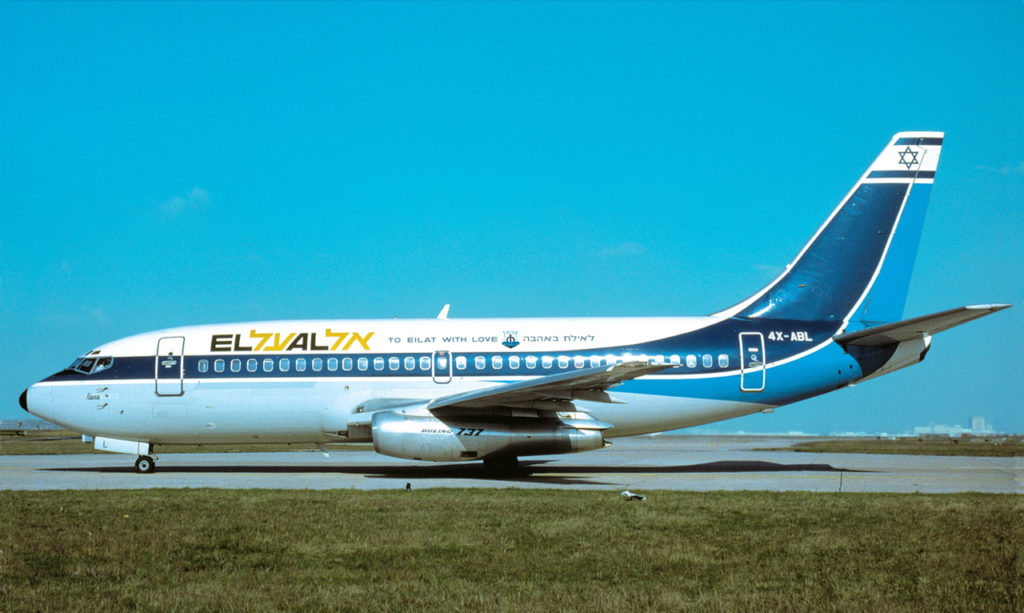
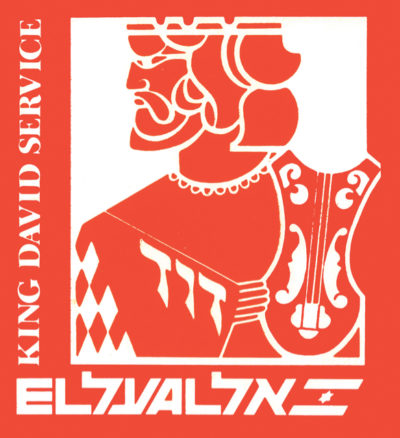

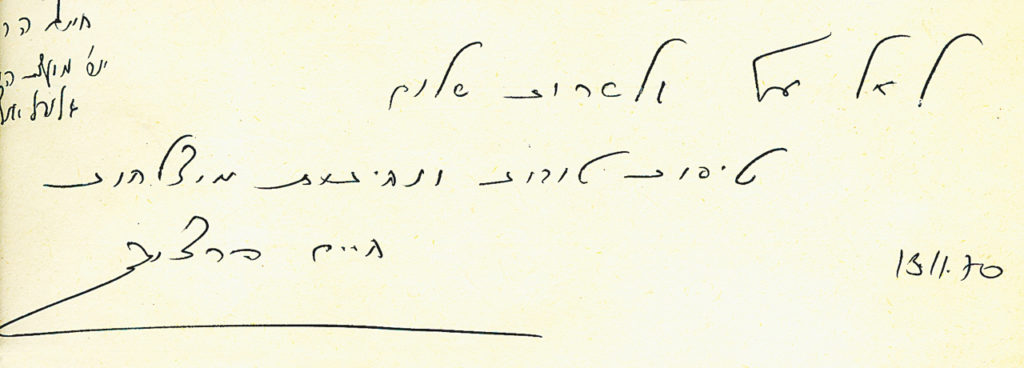
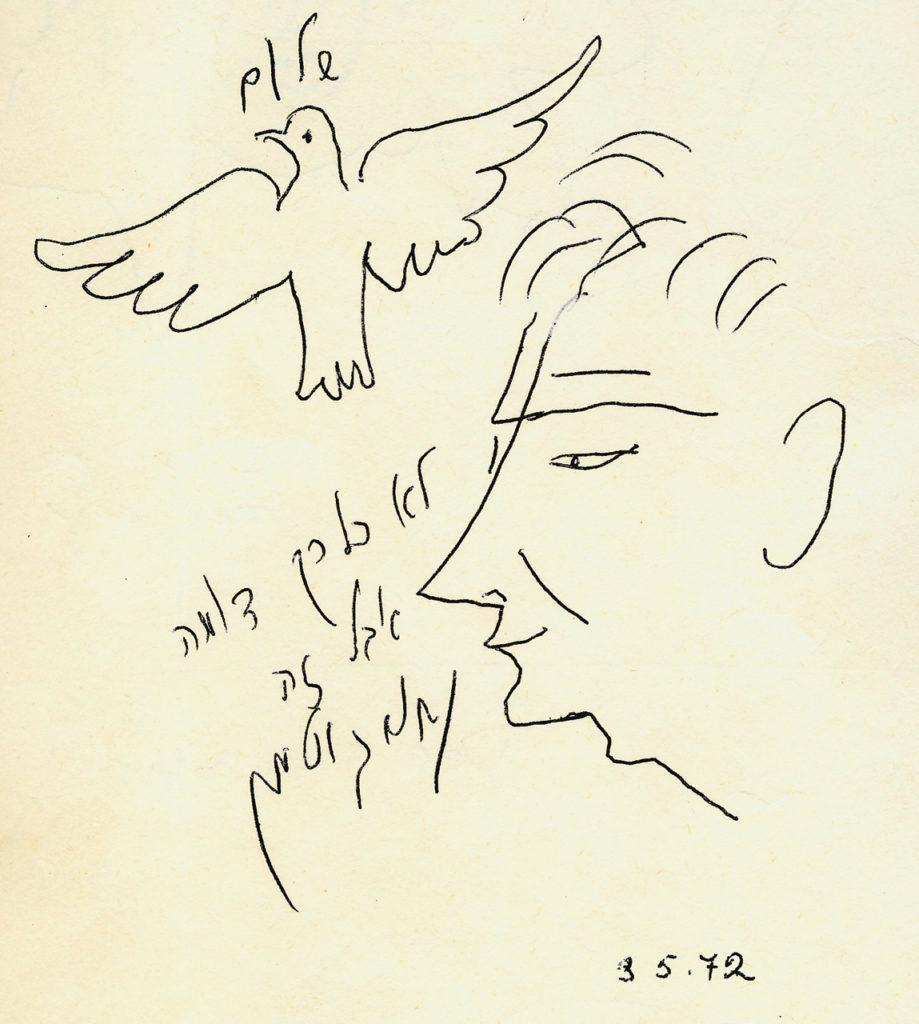
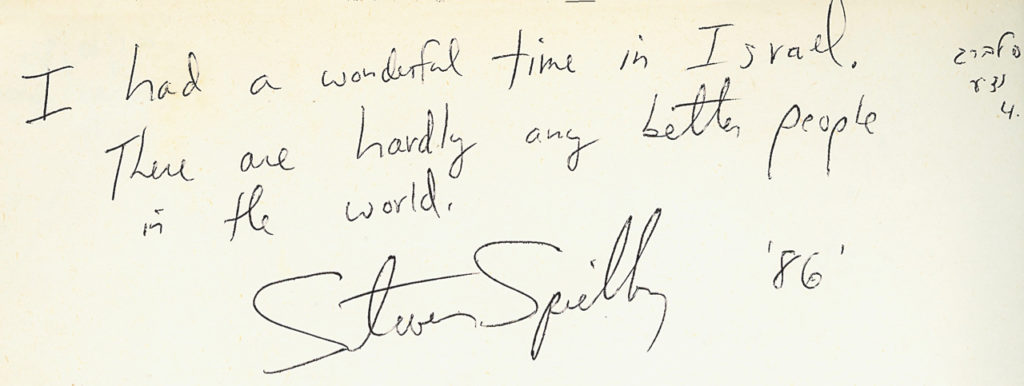
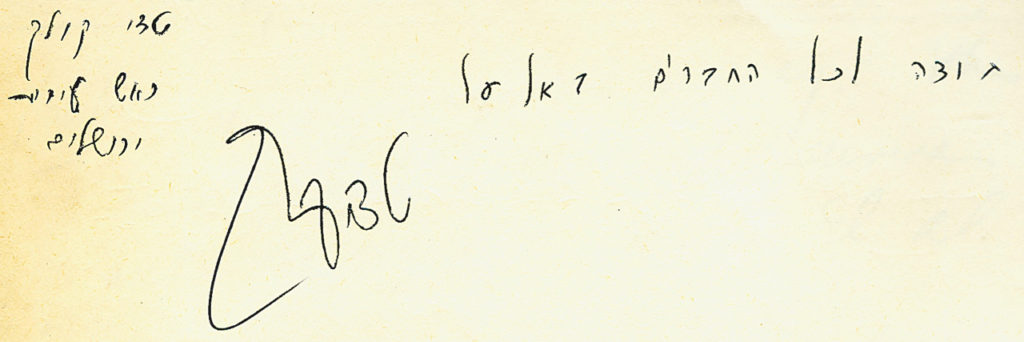
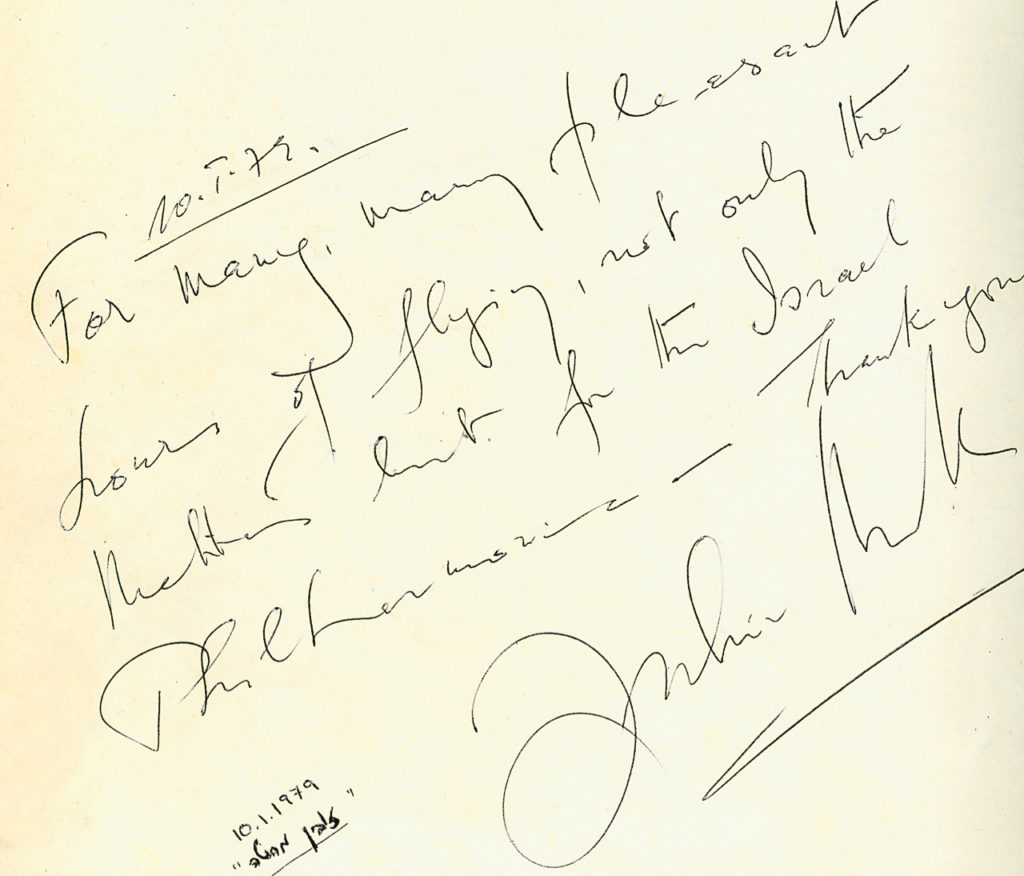
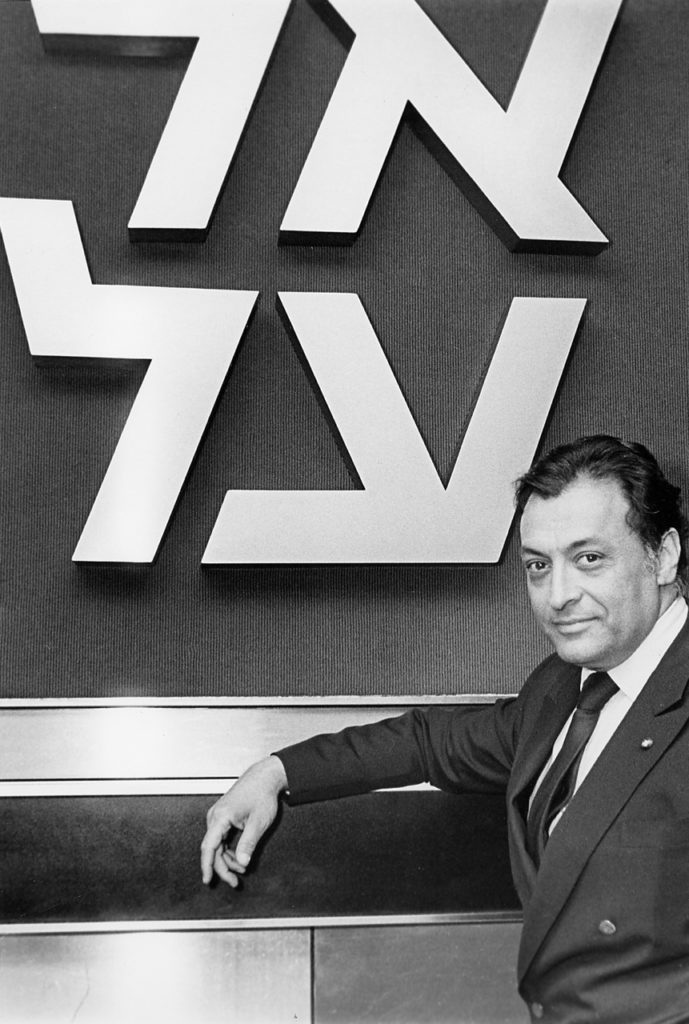
Service Changes
In 1979 EL AL successfully introduced departure times after midnight (usually 0100) for many of its westbound nonstop 747 services from Tel Aviv to New York. The flights, typically designated ‘LY001’, were well-received, as a full night’s sleep could be had during the 12-hour trip, which would arrive at JFK Airport about 0600 local time. Also, the cool temperatures of the early morning departure hour improve the aircraft’s performance, allowing the carriage of more passengers and freight than would be possible in the heat of the day. Takeoff weights for these flights are carefully computed to allow maximum payload while retaining the necessary margin of safety.
Service to Cairo, introduced in March 1980, proved successful at first and frequency was increased to five times a week by 1982. In October 1981, EL AL added flights from Ben-Gurion to Eilat, Israel’s Red Sea tourist resort, but only as an extension of services originating in the US and Europe. Purely domestic route authority to Eilat was still reserved for Arkia. Boston was added in June 1982, but flights to Chicago were halted in April 1980, and several sales offices in the US and Europe were closed in an effort to restore profitability.
EL AL refurbished its first class ‘King David’ service, and at the beginning of 1980 it introduced a business cabin. Known as ‘King Solomon’ class, it provided more space between seats, improved catering and other amenities compared to coach (economy).
With everyone now pulling together, the airline returned to its historic efficiency levels. On-time performance during the second half of the 79/80 fiscal year reached 83% compared to an abysmally low 50% during the previous comparable period. For all of 1980 EL AL logged the highest on-time performance record of any international airline.
Travel agent support was regained, and passengers returned. High marks were received for service and safety. The London Daily Mail newspaper conducted a secret survey of in-flight products of trans-Atlantic carriers, and EL AL placed first. King Solomon service was ranked by a leading magazine as one of the top seven business classes in the world. Pride in the national carrier blossomed again.
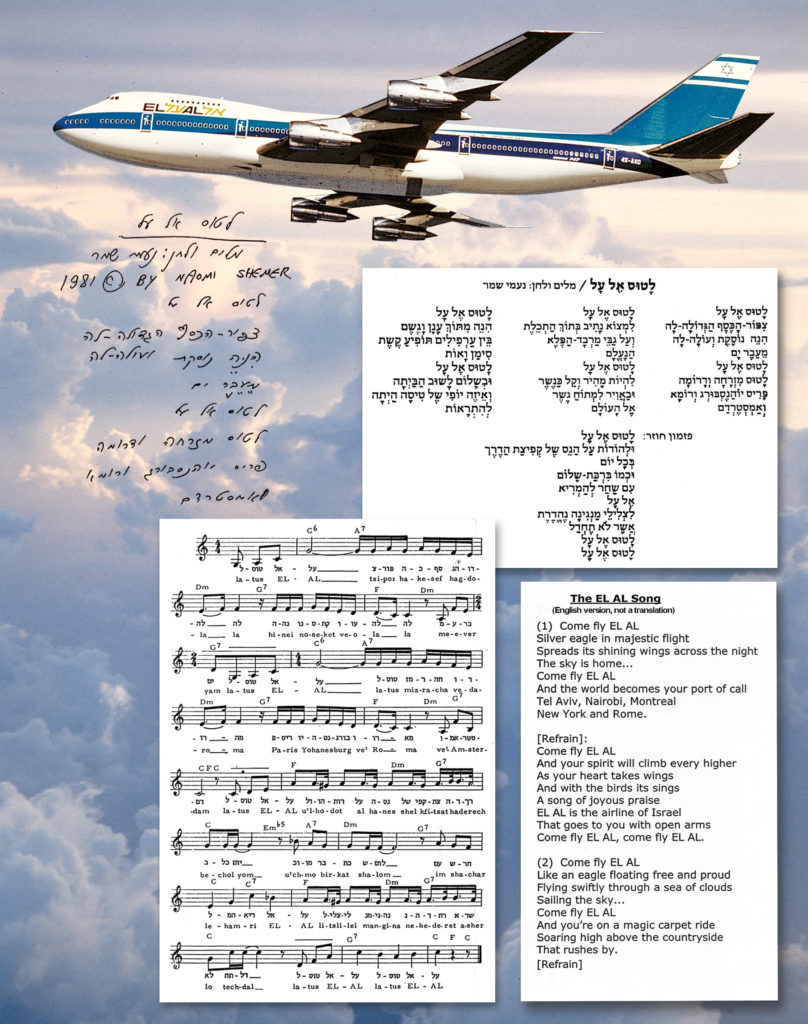
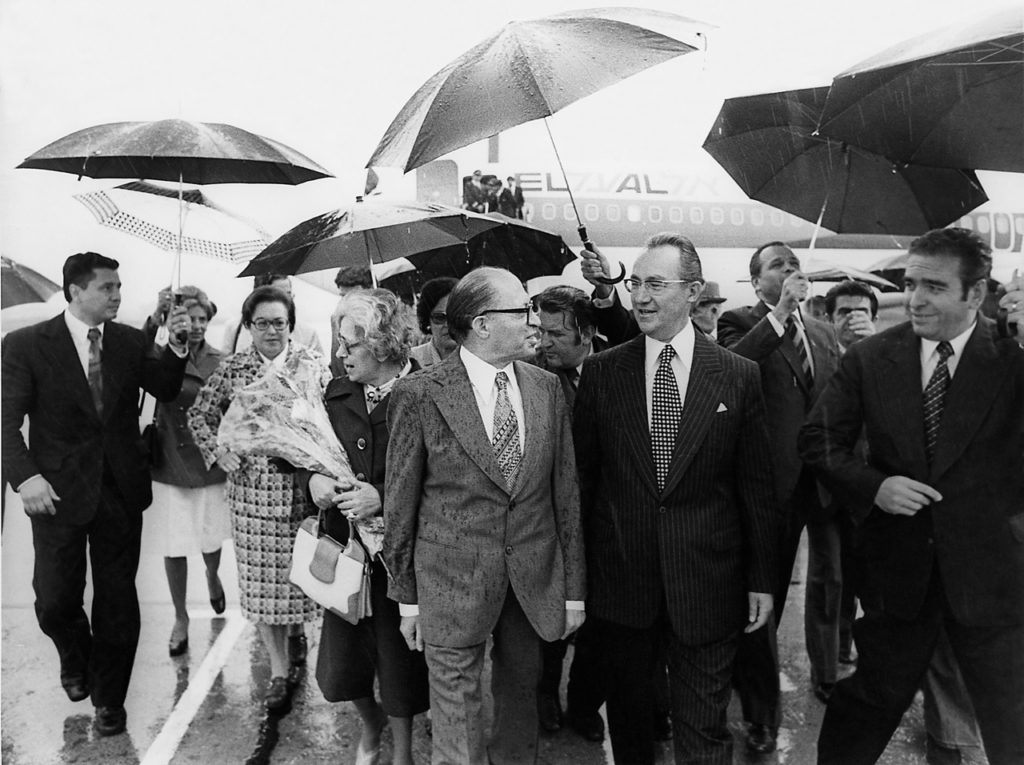
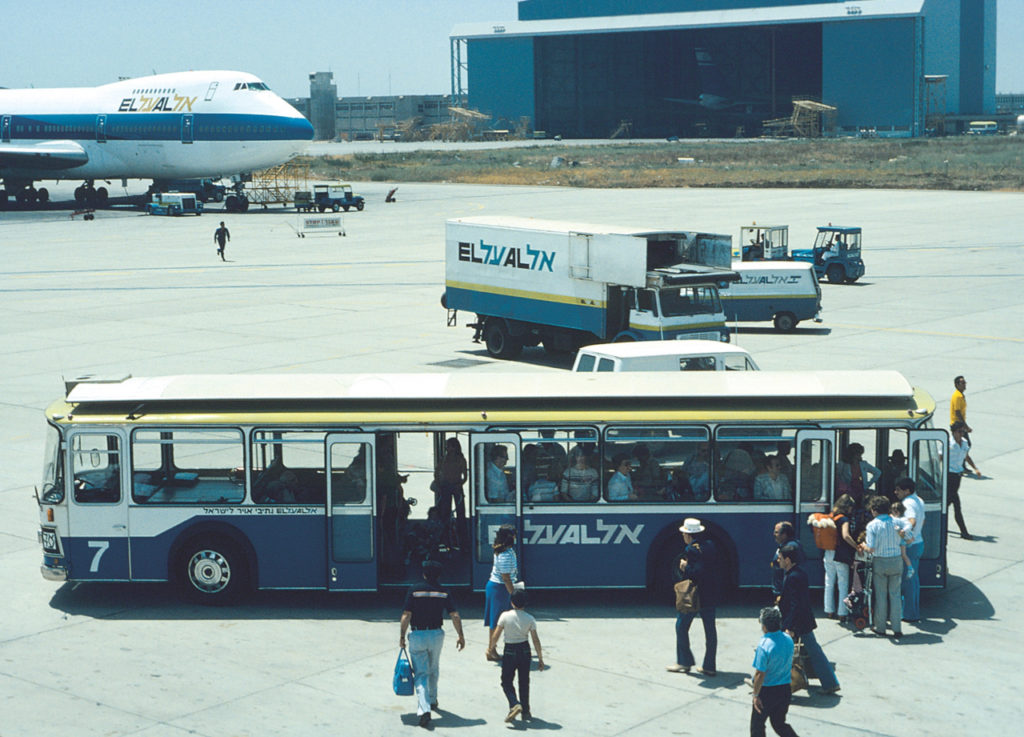
Spiral to Shutdown
On 15 October 1980 a special report on EL AL was released, commissioned by the airline’s new management and prepared by the international consulting firm, McKinsey. The report followed a full-scale audit and evaluation of the company’s operations, and one of McKinsey’s recommendations was to cut an additional 700 staff. Suddenly the euphoria in management/labor relations ended. A furor erupted among employees, and the debate found its way into the Israeli press. The workers committees strongly fought additional reductions, but the government insisted on implementing all the report’s suggestions, saying only then would it be willing to serve as a guarantor for the $250 million (some $625 million today) loan needed to purchase 767s and 737s.
Finally, on 23 December 1980 a new labor agreement was reached. The workers committees waived salary increases that would save $23 million, and a compromise was reached on the issue of dismissing 700 employees; many received early retirement benefits and the balance were given mandatory vacation periods of one to three months. But the bitterness persisted. Soon sporadic work stoppages and slowdowns resumed.
In June 1982, Israel, stung by continuing terrorist attacks by Palestinian groups in Lebanon against northern Galilee residents, launched Operation Peace for Galilee, moving the focus of the war into Lebanon. Once again, overseas airlines stopped flying to Israel, leaving EL AL as the sole lifeline. Although fighting soon ended, the tourism market, already affected by an international economic slump, reeled from the decline in travel to Israel. EL AL’s annual losses could not be stopped and were still running at a rate of more than $30 million a year.
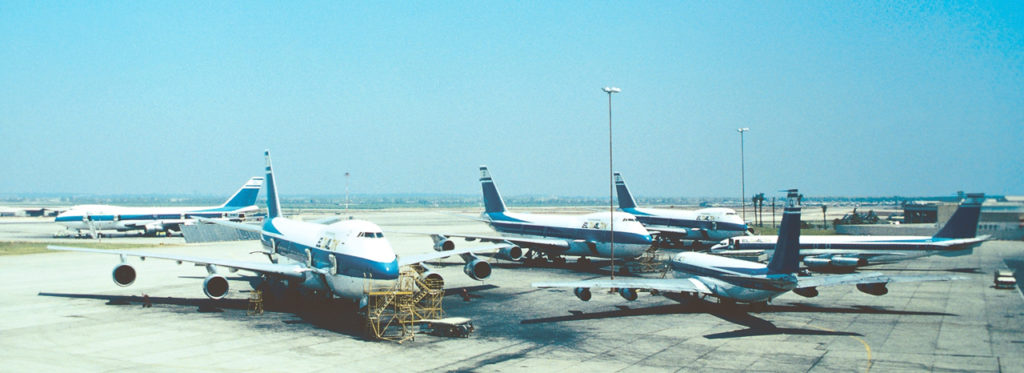
Speculation about shutting down the airline was rife, and calls arose from many quarters to reduce frequencies and discontinue non-essential routes. In early September 1982 the EL AL flight stewards called a strike, and the government decided this was the last straw. On 12 September it placed EL AL in financial receivership and halted passenger operations. No one knew whether EL AL would ever rise again.
Copyright 2021, Marvin G. Goldman
Last updated 7 July 2021

